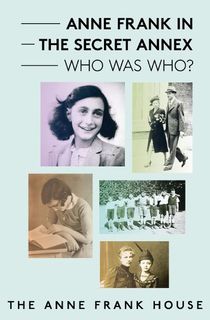After over two years of hiding, Anne Frank and the seven other people hiding with her in the “Secret Annex” were discovered by Gestapo officers on August 4th, 1944. Each member of the group was arrested and deported to concentration camps. Anne herself died at the Bergen-Belsen camp sometime in February 1945. She was 15 years old.
Anne’s father, Otto Frank, was the only resident of the Secret Annex to survive the war. When he returned to Amsterdam, Miep Gies, a Dutch woman who had helped hide the Frank family, gave him Anne’s diary, which he had published in 1947. Otto Frank spent the rest of his life supporting the publication of his daughter's diary, and pursuing the humanitarian ideals she expressed in it. Anne Frank's The Diary of a Young Girl has since received widespread acclaim, and has been published in over 70 languages.
Related: Anne Frank and Her Life in the Secret Annex
While The Diary of a Young Girl sheds light on what life was like in the Secret Annex, one question has remained unanswered for many years: who betrayed its inhabitants to the Nazis? An investigative team recently identified a prime suspect at the center of this historical mystery—Jewish notary Arnold Van den Bergh.
The team, which includes a retired FBI agent and about 20 other historians, criminologists, and data specialists, spent six years investigating this cold case. They point to an unsigned note addressed to Otto Frank as a key piece of evidence. The anonymous note accused Van den Bergh of passing on a list of addresses where Jews were hiding, including the Secret Annex, to the Nazis.
Van den Bergh was a member of Amsterdam’s Jewish Council, a board set up by the Nazis to control the city's Jewish population. Members of the council were exempt from deportation until 1943, when it was disbanded, but Van den Bergh managed to escape deportation completely. The research team believes that Van den Bergh revealed the Franks' location to the Nazis in order to save his own family.
Other experts are more skeptical of the team’s findings. The Jewish Council’s list of addresses has been the subject of rumors for decades, but no concrete evidence of such a list has ever been found.
Related: Jewish Resistance Fighters Pulled Off the Largest Prison Escape of WWII
Others take particular issue with the theory’s emphasis on Van den Bergh’s position on the Jewish Council. Since the organization was set up by Nazi forces as they orchestrated a genocide, Van den Bergh would have had little real power or leverage. The Jewish Council has been misrepresented in the past in order to shift undue blame on Jewish people for the Holocaust. As Hanna Luden of CIDI—a Dutch Jewish organization that combats anti-Semitism—put it, “if this turns into ‘the Jews did it’ that would be unfortunate. The Nazis were ultimately responsible.”
It's also worth noting that Otto Frank was aware of the accusation against Van den Bergh but never spoke about it publicly. We can only speculate why; whether it's because he didn't believe it to be true, was wary of victim-blaming, wanted to protect the privacy of the surviving Van den Berghs, or other unknown reasons, we can't be certain.
While we may be one step closer to putting this historical mystery to rest, there's a plethora of other information out there about the Franks. Further findings about Anne Frank’s life in the Secret Annex and the people who hid with her can be found in Anne Frank in the Secret Annex: Who Was Who?, a book put together by experts from the Anne Frank House.

Anne Frank in the Secret Annex
Sources: CNN, The New York Times
